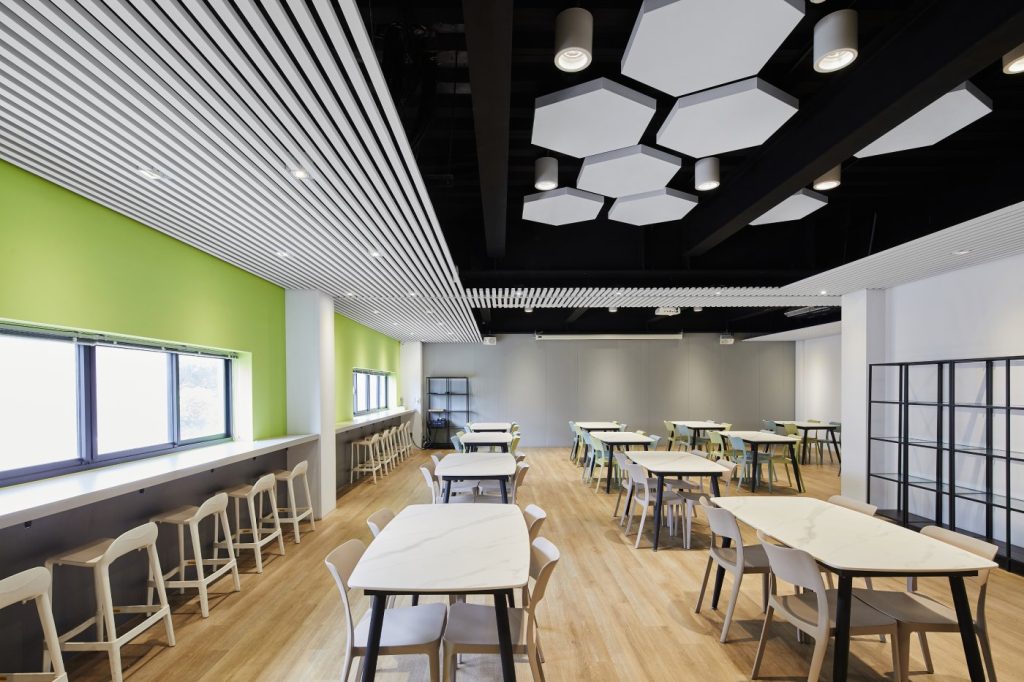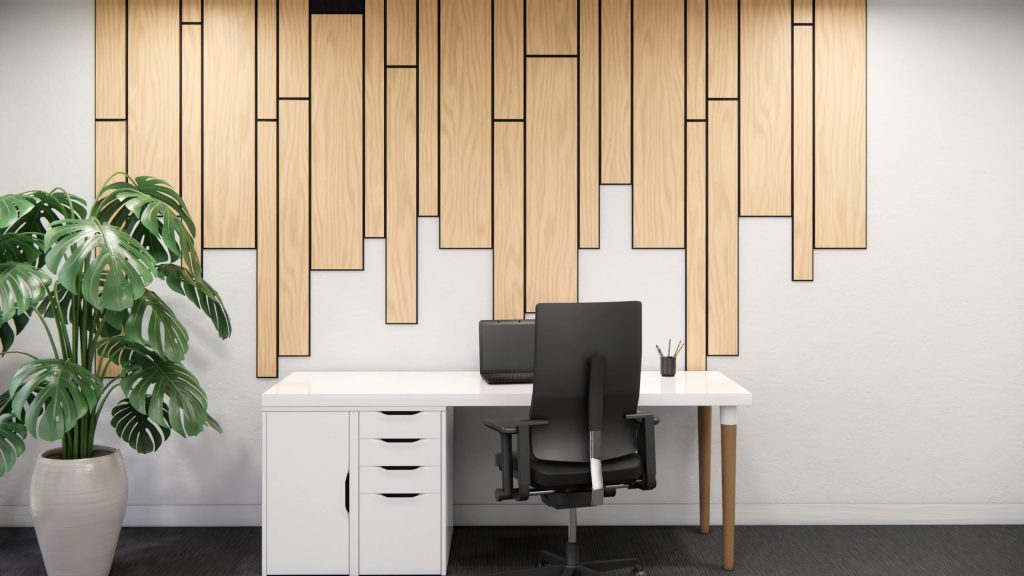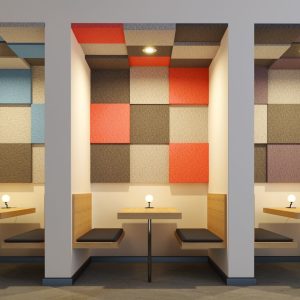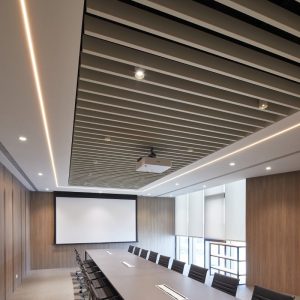Poor acoustics can quickly disrupt the functionality of a space, especially in environments where clear communication and focus are essential. From poor speech intelligibility to general wellbeing concerns, sound control plays a crucial role in creating effective commercial and institutional settings. One of the most reliable ways to manage unwanted noise is through the use of modern acoustic panel materials – engineered to absorb sound energy and reduce echo and reverberation.
By limiting sound reflections, these materials help improve clarity, reduce noise pollution, and support healthier, more productive environments. Prolonged exposure to elevated noise levels can raise stress levels, diminish concentration, and undermine the overall effectiveness of a space. That’s why proactive property managers are turning to decorative acoustic panels as a practical, high impact solution for noise control and sound quality improvement.
Modern Applications of Acoustic Panels
As acoustic design for offices has evolved, so have expectations for acoustic performance. Today, acoustic panel materials are no longer limited to specialized sound environments–they’ve become essential in a wide range of public and commercial spaces. Acoustic design has expanded beyond purely functional panels to include solutions that are aesthetically impactful, environmentally conscious, and non-harmful–or even beneficial–to human health and psychology. Whether used for productivity, comfort, or wellbeing, modern acoustic treatment materials are now a standard part of functional and thoughtful interior design.
Offices and Co-Working Spaces
Modern office spaces often feature open-plan layouts, which encourage collaboration and flexibility but also introduce significant acoustic challenges. Noise from conversations, phone calls, and equipment can quickly overwhelm these spaces. By integrating PET felt wall panels into walls, ceilings, and even partitions, organizations can improve speech clarity during meetings and virtual calls, reduce overall noise levels, and create a more focused, less fatiguing work environment. All of these benefits combine to increase both productivity and employee satisfaction in facilities that focus on open office acoustics in their design plans.
Hospitality and Retail
In restaurants, cafes, retail stores, and showrooms, acoustic comfort is a subtle but powerful part of the customer experience. Excessive reverberation can make conversations difficult and result in environments that feel chaotic. Decorative acoustic panels that blend with or enhance the interior design help create more welcoming and enjoyable atmospheres where guests are likely to linger and come back in the future.
Education and Healthcare
In educational settings, clear communication is vital for effective learning, while in healthcare environments, noise control can directly impact patient recovery, privacy, and staff performance. PET felt acoustic panels in classrooms, lecture halls, waiting rooms, and hospital corridors help reduce distraction, improve comprehension and retention, and promote a calmer, more supportive atmosphere for students, educators, patients, and staff alike.
Material Innovations in Acoustic Panels
As the demand for sound control grows across a wide range of industries, so does the need for better, more sustainable sound control materials. Today’s acoustic panel materials are not only engineered for high performance–they’re also crafted with sustainability, durability, and design flexibility in mind. From recycled materials to naturally derived fibers, these innovations reflect a shift toward more responsible and visually integrated noise reduction solutions.
Examples of modern eco-friendly wall panels include:
- PET Felt – Made primarily from recycled single-use plastic bottles, PET felt acoustic panels are lightweight, durable, and available in a wide range of colors and forms. It’s one of the most popular choices for eco-conscious projects.
- Wood Fiber Panels – Combining natural aesthetics with solid performance, these panels offer sound absorption along with a warm, organic texture–ideal for spaces aiming for a more natural or biophilic design.
- Microperforated Aluminum – These panels use tiny holes to diffuse and absorb sound, offering a sleek, modern look with high fire resistance and longevity–perfect for public or high-traffic environments.
- Eco-Friendly Foam Alternatives – New bio-based or low-emission foams provide effective sound absorption without the health or environmental concerns associated with traditional petroleum-based products.
These materials not only improve acoustics but also support goals in green building design, wellness-focused architecture, and visually appealing interiors. The following chart will help you determine which type of panel is right for your needs.
| Material | Sound Absorption | Eco-Friendliness | Common Uses | Cost |
| PET Felt | Very High | High | Offices, Classrooms | $$ |
| Fabric-Wrapped Mineral Wool | High | Medium | Studios, Theaters | $$$ |
| Microperforated Aluminum | Medium to High | Medium | Airports, Offices, Transit Hubs | $$$ |
| Wood Wool | Medium | High | Retail, Restaurants | $$ |
| Foam Alternatives | Moderate | Low | Home Use | $ |
Sound Absorption vs. Diffusion Explained
Not all acoustic panels function the same way–and understanding the difference between absorption and diffusion is key to effective acoustic design.
Absorption
Sound absorption materials trap sound waves and reduce echo and reverberation. These are ideal for spaces where clarity is crucial, like offices, classrooms, and meeting rooms.
Diffusion
Sound diffusion scatters sound waves more evenly throughout a space, preserving energy while eliminating harsh reflections. This creates more natural sounding spaces and is especially useful in performance venues, worship spaces, and large communal areas.
For many environments, a hybrid approach is ideal. Hybrid panels or acoustic designs that combine absorptive and diffusive elements help create a balanced acoustic profile–reducing echo without creating a “dead” sound.
Customization and Aesthetic Design
Modern acoustic panels are as much about form as they are about function. We are no longer limited to bulky, bland sound treatments, as today’s panels are highly customizable architectural elements that contribute to the overall design language of a space.
- Choose from standard and custom sound panels in various shapes, vibrant colors, and custom printed designs to match branding or interior themes.
- Use acoustic art panels, ceiling baffles and clouds in design-conscious environments such as lobbies, restaurants, or showrooms where appearance matters just as much as performance.
- Modular acoustic systems allow for flexible layouts and future scalability, making them ideal for evolving workspaces or multipurpose environments.
These options make it easier than ever to integrate acoustic solutions without compromising aesthetics.
Installation and Maintenance Tips
The right acoustic panel installation method depends on the space, intended use, and panel type. Consider the following options:
- Wall-mounted sound panels are effective for controlling mid- and high-frequency sound reflections in conference rooms or offices. Mounting them in the 3-6 foot range off the floor offers some of the best results.
- Ceiling-suspended panels and acoustic baffles are excellent in large, open spaces where floor or wall real estate is limited. Some can be installed into existing T-Grid systems, while others require custom suspension hardware for secure mounting.
- Freestanding or moveable panels offer flexibility in co-working spaces, studios, or multi-use areas. They can be moved and rearranged to accommodate changing needs.
While many acoustic panels are designed for easy DIY installation, larger or more complex projects often benefit from professional placement to ensure optimal performance.
For longevity, regular dusting or vacuuming (especially of fabric-wrapped acoustic panels or PET panels) will maintain appearance and effectiveness. Always follow the manufacturer’s care guidelines to avoid damaging the material or compromising its acoustic properties.
Conclusion
Modern acoustic panels offer far more than basic sound control–they’re a powerful tool for enhancing both the functionality and aesthetics of a space. Whether it’s reducing echo in open-plan offices, improving speech clarity in classrooms, or creating a more comfortable dining experience in hospitality settings, modern acoustic panel materials are designed to meet the evolving demands of commercial and institutional environments.
Material innovations such as PET felt, wood fiber, microperforated metals, and eco-friendly foam alternatives have made it possible to address acoustic challenges without compromising on sustainability, durability, or design. With options that absorb, diffuse, or balance sound, decorative acoustic panels can be tailored to suit nearly any space or application.
Equally important is aligning the acoustic treatment with the specific function and acoustical goals of each room. A one-size-fits-all solution rarely delivers the results we’re after. Instead, effective acoustic design takes into account factors like occupancy, activity, layout, and even visual identity–ensuring that sound control integrates seamlessly into the space.
If you’re considering acoustic improvements for a facility, showroom, learning environment, or any shared space, consulting with experts can make all the difference. Reach out to our dedicated team at Material LogIQ who can offer a wide range of high performance acoustic panel solutions (backed by rigorous acoustic performance testing) and the technical knowledge to match them with your exact needs.
Investing in the right acoustic panel materials today means creating environments that support productivity, comfort, and wellbeing for years to come.






